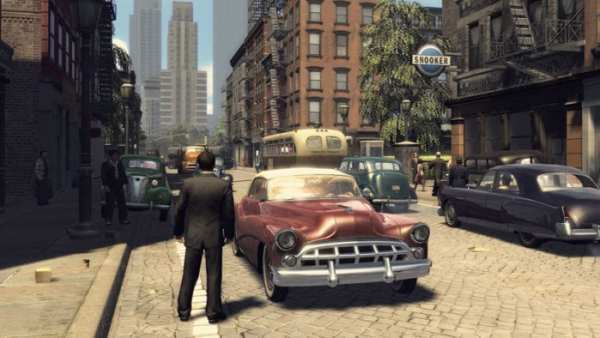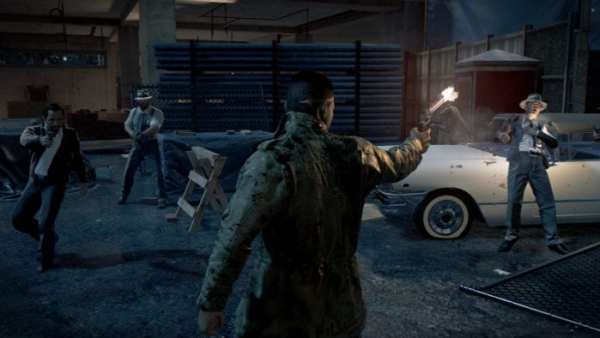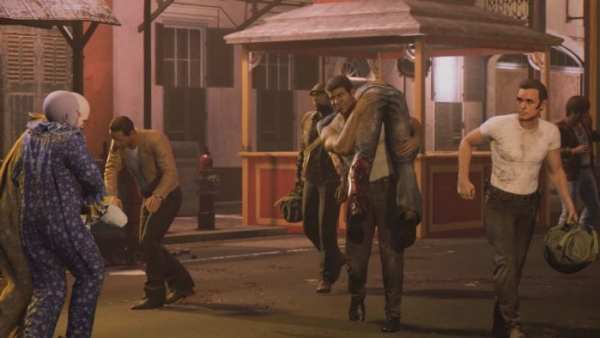Mafia III on the PlayStation 4
Mafia III had some big shoes to fill from the moment it was announced. The first game of the series presented an open world, crime-riddled adventure that took a distinct approach compared to its competition (Grand Theft Auto). Instead of being filled with diversions and tons of civilians to kill, you got speeding tickets and roamed around looking at historic sites. The second game changed things even further, serving up a much more linear narrative in its open world. They were different takes on what make open-world games so captivating without copying the tried and true formula of the biggest name in the genre. Releasing in a post GTA V world, Mafia III had to figure out how to do the same. How to stand up tall and appealing without just playing it by the numbers. Thankfully, Hanger 13’s latest manages to achieve this goal, though it does stumble a bit along the way.
Players step into the battleworn boots of Lincoln Clay, a bi-racial war orphan and veteran who stops fighting for his country overseas only to fight for the right to exist in his very home of New Bordeaux (Hanger 13’s fictional take on a 1960’s New Orleans). After a happy reunion with old friends, now members of the Black Mob and the Italian Mafia, it appears that things are looking up for everyone — until betrayal sets in, leaving the Black Mob decimated. What follows is a quest for revenge that sets the entire city of New Bordeaux ablaze.
A post-betrayal revenge quest isn’t exactly a fresh plot. At first glance, Mafia is taking the easy way out, giving you a simple, arguably overdone, catalyst to get you killing things. However, that tried and true formula is uplifted by what has to be the best narrative backdrop I’ve had the pleasure of playing in recent years.
Mafia III takes place in America during the 1960’s, a time when racism was a ingrained norm. Martin Luther King Jr. had recently been gunned down for being virtuous in a time of contempt. Riots by a people long overlooked were met with violence from those who sought to oppress them. It was a world where a man like Lincoln Clay could fight for his nation overseas only to be treated like less than a second class citizen when he returned to the home country that didn’t want him. Walk around, and you will hear slurs tossed about more often then you see the words “bae” or “fleek” in the current age. When you look like Lincoln Clay, simply existing is a challenge unto itself. While you won’t run into trouble in the bayous or the predominantly minority-populated neighborhoods, expanding out into the more affluent realms of New Bordeaux means dealing with much more than increased difficulty.
Hatred and a palpable tension fuels the world of Mafia III, but more remarkable is in how many forms. At first you’ll notice the “n” word tossed about as if it were child’s play. A simple, scathing title that reduces a man to nothing more than his color. Even in the digital world, it is foul and demeaning, and it is only a fraction of what players will face. Discomfort rests greater with what lies under the surface insult, a societal norm that stuck with me even after I put the game down. I was told to leave a store as soon as I walked in, simply because my “kind” didn’t belong. I was followed by not only the police, but by civilians who for some reason wondered what I, as a free man, could possibly be doing strolling around a public area. Even worse a feeling was being attacked by members of Sal Marcano’s crime family, only to have the police show up and join in on the party, completely ignoring that I had done nothing wrong and had even yet to brandish a weapon.
Everything I did was wrong. Not by any ethical virtue, but because of who I happened to be and, most importantly, what I happened to look like. Even in the face of my eventual crimes, it never mattered that there were hundreds of individuals doing the same if not worse than me within the city’s limits; they were white, I was not, and so I had to carry the brunt of the punishment. Adding tremendous insult to injury was the fact that I was committing nightmarish acts all to protect my people, the minorities of the city, yet it all seemed to be in vain. My vengeance wasn’t helping anyone out there. Hell, it was barely helping me. The more I reduced the Italian Mafia, the angrier both they and I became, us both lashing out at others bearing the same rage that had first consumed me.
That background, forever pushing against me and reminding me that no matter how hard I tried, I would never fit here, is Mafia III’s shining star. And that star is punctuated by a stunning soundtrack that manages to capture the action and times. However, the experience does become somewhat muddied due to the gameplay that is far from unenjoyable, but feels largely safe and repetitive. While the story and world goes through leaps and bounds to provide something that is uncomfortable, thought-provoking, and memorable, the activities spattered through the story are simple and seen before.
Shooting is serviceable, but it isn’t anything to write home about. You aim (with some assist, depending on the difficulty you chose) and you pull the trigger until the bad guys drop. You have other options such as explosives, vehicular combat, and even intimidation, but none of them feel particularly fresh in the grand scheme of things. While it all works well, it just feels like filler to lead you from major plot point to major plot point, something that struck me as odd for an action game.
Even the mission structure comes across as uninspired. You go to locations and wreck them until you’ve done enough damage to bring out the “boss.” After that, you kill or recruit them then give the area to one of your underbosses. The underbosses do add a bit of strategy to the whole affair, since you must keep them happy lest you find yourself standing at the business end of one of their guns. It’s a mechanic that sounds amazing on paper, but in practice it feels just okay. Not bad, but certainly not why you will remember Mafia III years down the line.
The power to leave Mafia III’s world burned into your mind belongs to New Bordeaux and its atmosphere alone. Even with the seemingly tacked-on gameplay, I couldn’t help but be pulled back into this troubling cycle of hatred and tough choices. I had wanted to use stealth as much as possible, a ridiculously easy route in most combat scenarios, but witnessing women being kidnapped and drugs being peddled to the poor often pushed me to fire a lot of bullets and cause a ruckus. At times, I think stealth’s ease was meant to show just how irrational hatred and revenge could make me. Whenever I came across a group of gangsters or some backwater drug dealers, I had the option of sticking to the shadows or showing them exactly who came to reap them from their mortal coil. The shadows works pretty much all of the time, and carries none of the threat of death that the guns-blazing alternative. All neon signs point at the nonlethal, but in the end I chose pools of blood and the scent of gunpowder lingering in the air.
That’s what Mafia III left with me, a bunch of dark decisions in a dark world that wants me dead in a way no other game does. It’s easy to be the bane of your enemy’s existence when you’re some hero coming to save the world from annihilation, but if the unforgettable target on your back is painted only by who you happened to be born as, it’s an altogether different experience. I was angry through a lot of my time with this game, and that’s a good thing. For the first time in a long time I was going after virtual enemies for my own personal reasons, not because the game told me I should. I wanted to see them dead, I wanted to watch their blood pool around them, and it was a frightening thing.
In the end, my vengeance did little more than beget more pain in the city I made mine. Mafia III took me through a grand tale of loss and, in the end, after all of my macho escapades, I was left more empty, realizing no amount of killing could change what was done. For that reason, Mafia III is not a game to be missed by anyone.
Score: 4/5 – Great
Pros
| Cons
|




